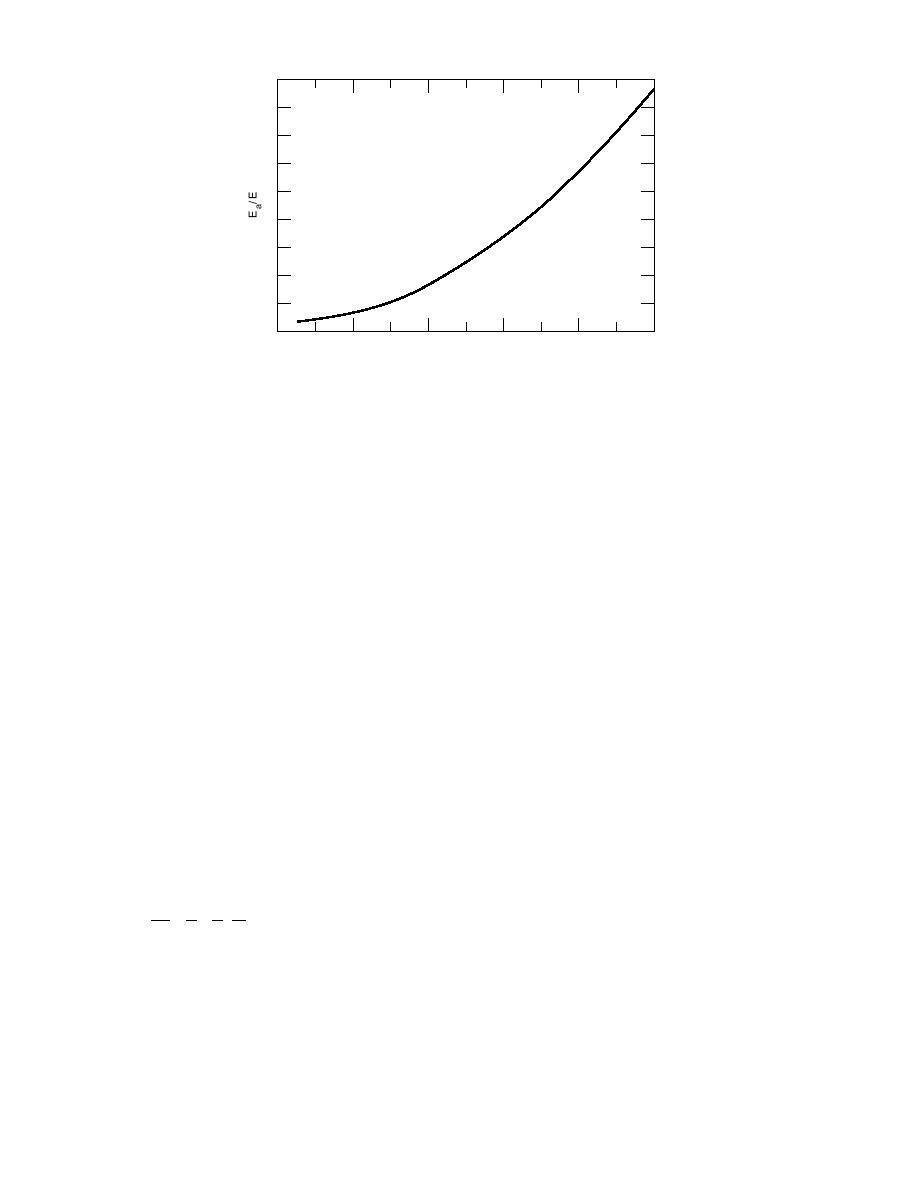
10
9
8
7
6
5
4
3
2
1
0
1
2
3
4
5
d/w
Figure 8. Ratio of apparent Young's modulus to Young's modulus of
the material, Ea/E, of a rubber block in the configuration of a long
butt joint seal, in relation to the shape factor d/w. (From Gent and
Lindley 1959.)
formation pattern deviated from the parabolic
tios of d/w less than 1, the apparent modulus of a
shape and the nominal strain distribution along
seal can approach a value that is 4/3 the sealant
the parabolic surface varied slightly from a "uni-
modulus, yet the apparent modulus can increase
dramatically with increasing d/w ratios. This in-
form" nominal strain. The calculation of a nomi-
formation could be used in the design choice of
nal strain that Tons suggested, and the use of the
d/w to ensure that stresses in the seal and at the
calculations to compare the movement capability
adhesive interface will not be excessive, i.e., to en-
of seals formed with different shape factors, is an
sure that a seal formed from a low modulus seal-
approach that has been incorporated into design
ant will not respond with a high stiffness. The re-
manuals (ACI 1993) and used extensively by prac-
lation provides a clear structural rational for the
ticing engineers.
need to maintain control over shape factors in
Another publication from 1959 describes a sim-
crack-sealing jobs through such means as rout and
ple analytical solution for shape factor design that
seal or saw and seal techniques. Gent and Mien-
is based on structural mechanics theory. Gent and
ecke (1970) presented similar solutions for bend-
Lindley (1959) presented results of elasticity analy-
ing and apparent shear joint movements, which
ses and experiments designed to assess the effect
could also be used for joint seal shape design. Gent
of a shape factor on the apparent modulus of rub-
and Lindley (1959) further showed that the eq 3
ber blocks, i.e., the stiffness of the blocks, in butt
relation might not apply directly to volume-com-
joint seal configurations under compression loads.
pressible rubber formulations, although they sug-
They showed that the apparent Young's modulus
gested that the relation could be modified to pre-
Ea of a rubber block in the configuration of a long
dict the response of such compounds. Chalhoub
butt joint seal, in relation to the Young's modulus
and Kelly (1991) presented an instructive deriva-
of the material E, the width of the joint w and the
tion of the eq 3 relationship, and also considered
depth of the seal d, can be approximated by
volume compressibility.
2
Ea 4 1 d
For an approximate analysis of the larger de-
= + .
(3)
3 3 w
formation compression or extension responses of
E
the rubber in a butt joint seal configuration, Gent
and Lindley (1959) utilized an elasticity-based so-
The relation is illustrated in Figure 8. It was de-
lution (Treloar 1975) of the stressstrain response
rived for volume-incompressible rubbers at small
of a rubber in pure homogeneous compression or
deformations, and was shown to compare well to
extension, with the Young's modulus replaced with
the experimental behavior of compressed rubber
the apparent Young's modulus. From the solution
blocks. Applying the relation to joint seals, for ra-
12



 Previous Page
Previous Page
